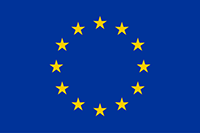I am looking for information as
Researcher

Industry

Patient

BBMRI contributes to ConcePTION: Building a European Breast Milk Collection
Short- and long-term benefits of breastfeeding to both mothers and infants have been well demonstrated. However, robust clinical lactation studies are rare and existing data cannot be confidently translated into evidence-based clinical practice. In order to provide evidence for how a medicine transfers to breastmilk, we need to test milk from mothers who need treatment during the post-partum period.
To that end, the IMI project ConcePTION’s Work Package 4 is developing a research infrastructure to collect, store and analyse samples of breast milk and blood. This infrastructure, compliant with regulatory quality and ISO standards, will be a platform for lactation studies for both universities and pharmaceutical companies, helping to bridge the knowledge gap for women who want to breastfeed and need information on drug transfer into breast milk.
Four demonstration projects will be conducted, to study milk transfer of Amoxicillin, Metformin, Venlafaxine and Levocetirizine/cetirizine. The studies will be carried out by different partners in the project and intend to flesh out strength and feasibility of different methodological approaches to inform our stakeholders about best practices. The clinical site in Oslo has already started with the recruitment of the donors and the other three project partners in Toulouse, Lausanne and Uppsala are about to start with it. And with that, a big step forward in building the European self-sustaining breast milk and blood collection has been taken.
As BBMRI-ERIC contributes to this exciting project, we decided to interview Hedvig Nordeng and Basma Kousa, both from the University of Oslo (UiO), about a clinical study out of Oslo using breast milk samples. Nordeng and Kousa describe the main challenges (e.g. ethical and logistical) of collecting breast milk samples in a clinical study, recruiting strategies and expected results. They also mention the importance of biobanking and the contributions of BBMRI-ERIC.
Find out more about the European Breast Milk collection on the ConcePTION website.
Watch the interview on YouTube.





